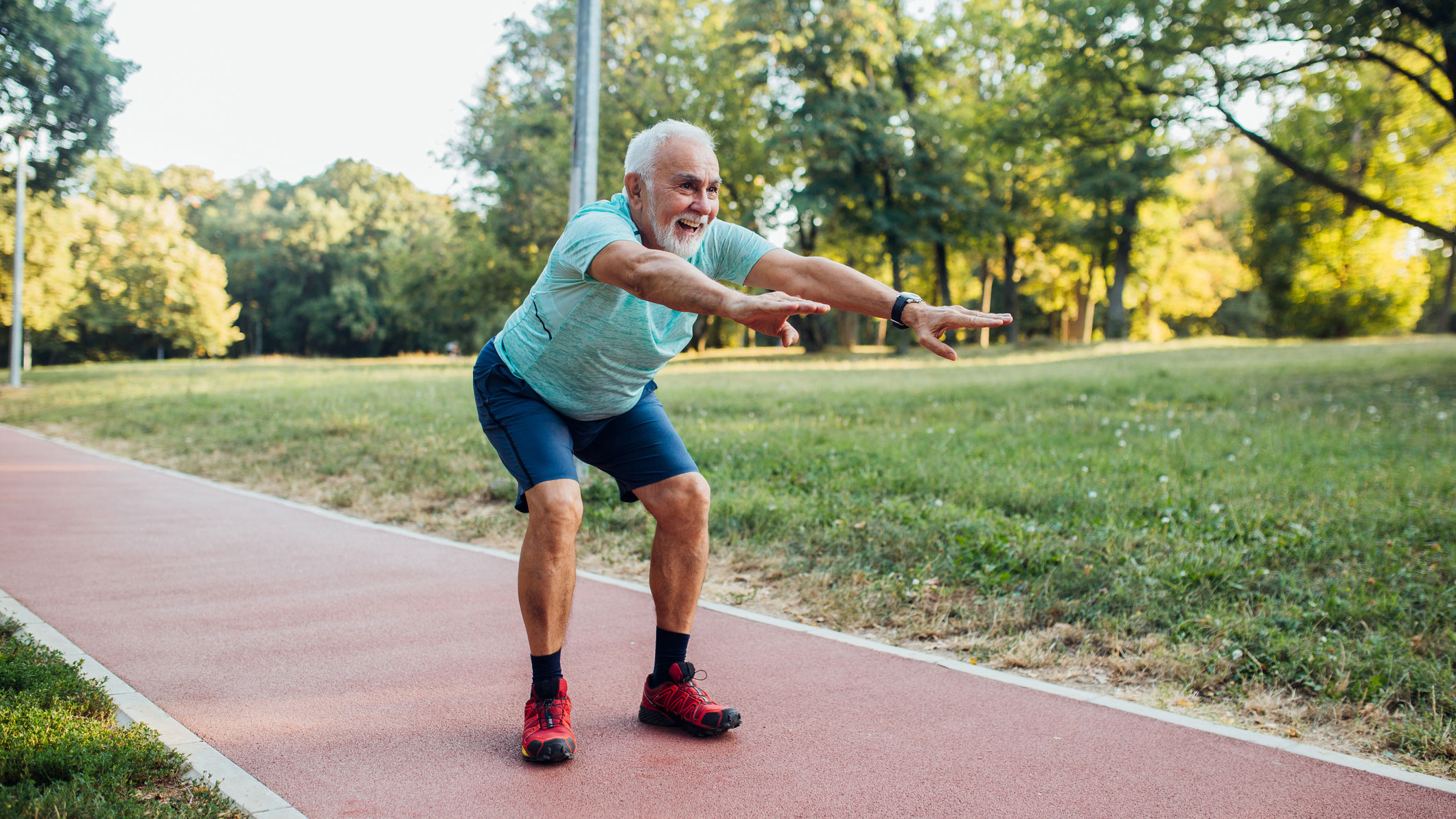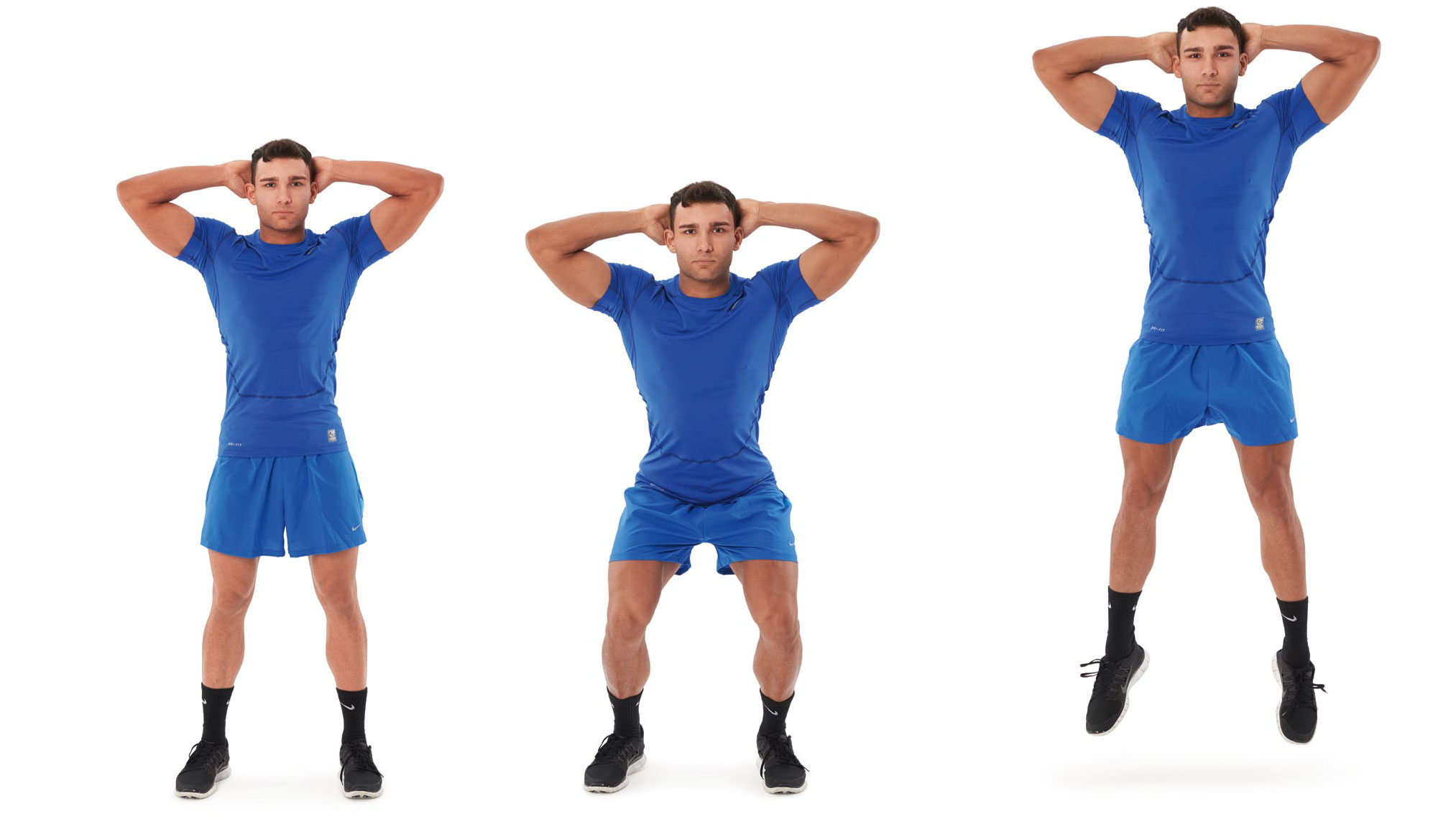Why jump squats are the best exercise for your butt, calves and weight loss
The jump squat is a metabolic conditioning exercise that trains your legs as well as Olympic lifting (and helps with weight loss)


If you're just starting your journey to getting fit, you might be discouraged to find out many gyms are still closed as a result of the global health crisis. Lots of us have been left without barbells, leg presses and the best elliptical machines for the last year. People have had to find another way to exercise your legs, tone your bum and get stronger.
However, many fitness enthusiasts have found you can get similar benefits at home with nothing except an elevated surface, like a box or a park bench, and a killer no-kit weight loss exercise. Introducing: the squat jump, a more intense version of the squat which adds explosive power and more demands on your body, making it a great way to tone up and lose weight.

One 2016 study published in the Journal of Sports Science & Medicine looked at the benefits of eight weeks of squat jump training. The study found consistent training of the move led to "significant improvements in countermovement jump, squat jump, maximum squat force and average force" in moderately trained young men.
Not only does it give your legs more raw power, it also makes you run faster. The study also found more improvements in 50 meter sprint time as a result of consistent squat jump training.
Another study, published in the Journal of Strength and Conditioning Research, said: "the ability to express high levels of power and speed are essential components of athletic success in numerous sports" and recommended the jump squat be included in training for athletes to develop "peak power".

The reason why jump squats are so good at developing lower-body power is that unlike regular air squats, jump squats are a plyometric movement. Plyometric moves require explosive force to lift you off the ground, developing fast-twitch muscle fibres in your legs.
These are the same muscle fibres that fire when you jump, sprint or perform any other explosive movement, which is why jump squat training helps you run faster over short distances and develop lower-body power.
Start your week with achievable workout ideas, health tips and wellbeing advice in your inbox.
If you want to know how to get a slim waist instead of powerful legs, this move is still for you. Because it works your muscles so hard, and you use your whole body in the jump, this exercise causes your body to need lots of oxygen in order to recover properly. It's burning a lot of calories, making this a killer weight-loss exercise and a great addition to any exercise programme.
Out for a run? If you pass a park bench, stop and do ten squat jumps, and believe us, you'll feel the burn. If you're struggling to cope without heavy weights, or if you're just looking to develop lower-body power at home, the jump squat should be your go-to move.
How to do a squat jump

- Stand up tall, hands behind your head, your elbows drawn back to shoulder level and your feet shoulder width apart.
- Squat down in the usual fashion and pause for five seconds. Get as low as you can
- while squatting. Ideally, your thighs will be parallel to the floor.
- Explosively jump as high as you can. If you're doing this workout with an elevated surface, jump forward enough to land on this surface. Once you have landed, step down and repeat the exercise for the set number of repetitions, or as many as you can in one minute.
Matt Evans is an experienced health and fitness journalist and is currently Fitness and Wellbeing Editor at TechRadar, covering all things exercise and nutrition on Fit&Well's tech-focused sister site. Matt originally discovered exercise through martial arts: he holds a black belt in Karate and remains a keen runner, gym-goer, and infrequent yogi. His top fitness tip? Stretch.
